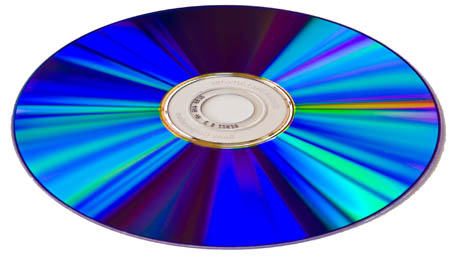The arrival of digital technology in the world of photography has raised numerous new issues regarding the long-term storage of images. Some photographers are happy to reply upon magnetic media, CDs or DVDs to preserve valuable material, but in reality the security they provide is less than certain.
Magnetic media, usually tapes or disks, should always be stored well away from magnetic fields such as those found around cathode-ray tube monitors and television sets. It is also good practice to keep them away from mains power points and associated wiring. The magnetic fields generated by high voltage equipment are significant and can destroy or degrade information stored on disks and tapes. It is also important to keep magnetic media clean, and free from dust and condensation. Hard disk drives must also be protected from mechanical shock which may cause a head to crash and damage the disk's recording surface.
 Many photographers transfer digital images to CDs and DVDs for long-term storage and to free up valuable hard disk space. This works well in the short term but little is known about the long-term security of such media. The experience of many photographers is that CDs degrade and some prove unreadable after a few years. Some argue that this comes about because the CDs were not properly written in the first place, perhaps because a laser in a CD burner was nearing the end of its life. Others believe that the CDs themselves are in some way to blame. Whatever the origins of the problem, it is certainly true that a small percentage of every collection of CDs burnt on a PC is likely to prove unreadable after a period of five years. Some researchers claim that cheap CD-Rs may have a lifespan of only two to five years. Their optical surfaces use a layer of dye which is not sufficiently stable to last for more than a few years.
Many photographers transfer digital images to CDs and DVDs for long-term storage and to free up valuable hard disk space. This works well in the short term but little is known about the long-term security of such media. The experience of many photographers is that CDs degrade and some prove unreadable after a few years. Some argue that this comes about because the CDs were not properly written in the first place, perhaps because a laser in a CD burner was nearing the end of its life. Others believe that the CDs themselves are in some way to blame. Whatever the origins of the problem, it is certainly true that a small percentage of every collection of CDs burnt on a PC is likely to prove unreadable after a period of five years. Some researchers claim that cheap CD-Rs may have a lifespan of only two to five years. Their optical surfaces use a layer of dye which is not sufficiently stable to last for more than a few years.
The reality is that original commercially-pressed CDs are fragile, and burnt CD-Rs are even more susceptible to damage and deterioration. They cannot withstand prolonged exposure to daylight, variations in temperature or any significant attrition due to wear and tear. Their recording surfaces should not be handled or marked in any way, and the disks should not be placed unprotected on working surfaces. CDs should be handled by their edges or by the central hole to avoid damaging fingerprints, and stored in a vertical position to avoid long-term bending under the influence of gravity.
Manufacturers typically claim a 10 -100-year life for CDs and DVDs, but extensive tests by independent bodies have revealed figures closer to 5 - 30 years even under ideal storage conditions. When less carefully handled and stored in an environment such as that found in a typical home, they may remain readable for only a few years. When they fail they seem typically to do so in a sudden and dramatic manner, perhaps even crashing a computer's operating system. The implications of this for photographers are very significant. Valuable images must be routinely read and checked, and regularly if infrequently rewritten on to new media.
It is also worth considering the rate at which digital technology advances, and the likely availability of appropriate CD drives perhaps ten years in the future. Thirty years ago the industry was using 8" floppy disks - twenty years ago it was 5¼" floppy disks. The 3½" floppy disk of ten years ago has now also more or less disappeared. New high-definition CD technologies are being developed and it cannot be many years before current CD-Rs and DVD are discontinued. The long-term security of digital images is consequently at least uncertain.






